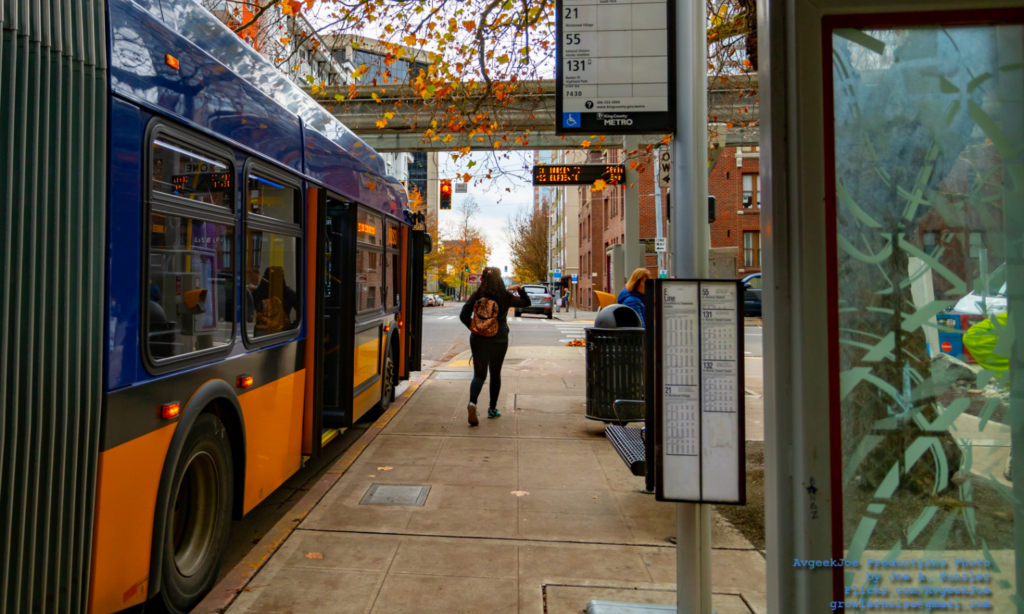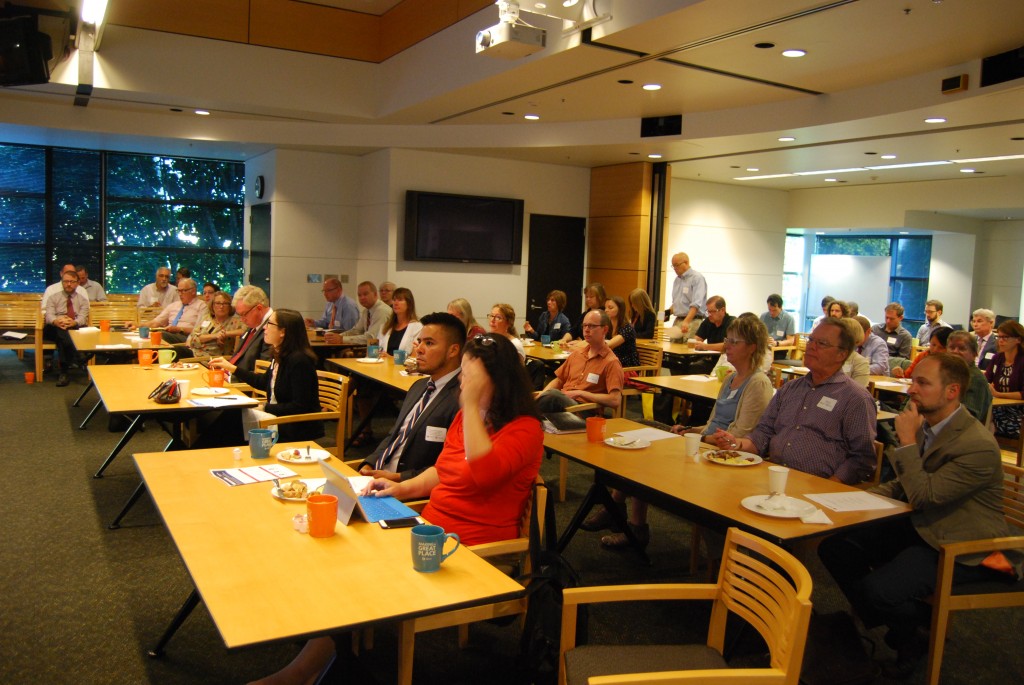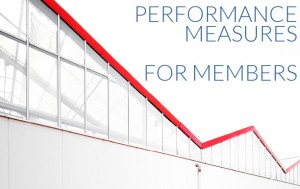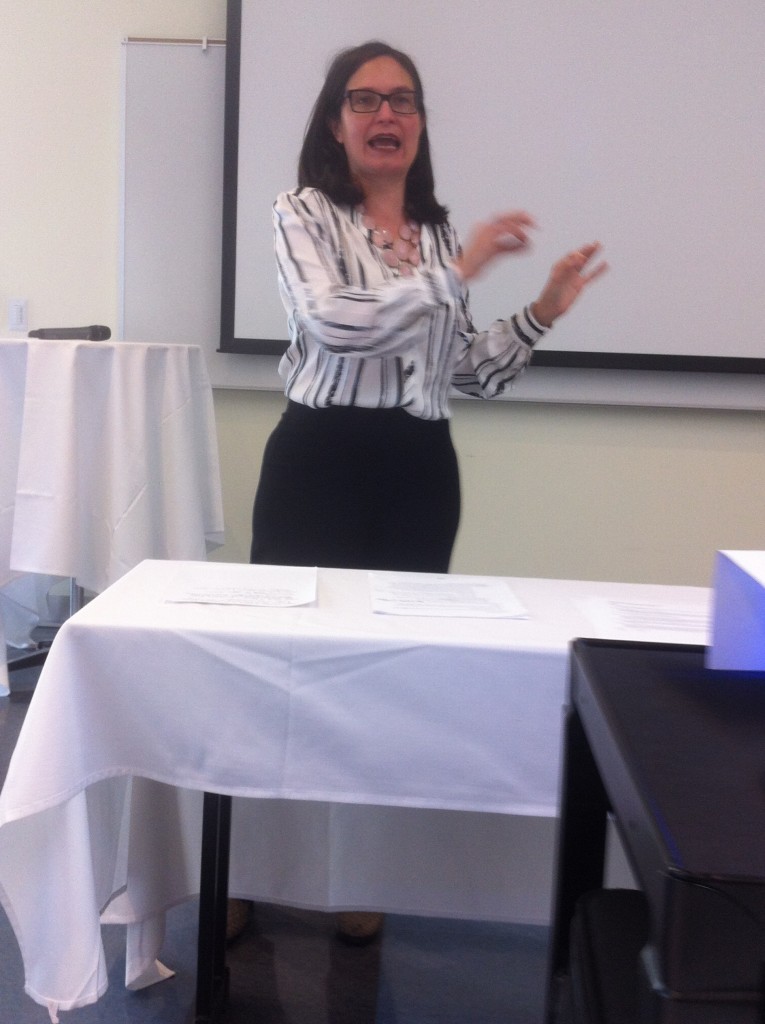
Effectively linking transportation with economic development: Beth Osborne visits the Pacific Northwest

On September 10 and 11, T4A brought Senior Policy Advisor Beth Osborne to the Pacific Northwest to speak with audiences in Seattle, Portland and Eugene about the links between transportation investment and economic development. There are countless examples of these links in each city, and local speakers shared those stories at all three events.

A good crowd gathered at Metro’s policy breakfast with Beth Osborne in Portland.
This November, Seattle voters will decide whether to support the Move Seattle levy, an ambitious plan to invest in five bus rapid transit (BRT) lines and a range of complete streets projects to improve Seattleites’ mobility and safety by updating the design of city streets to better match the demands being placed on them by a greater range of users. Mayor Murray’s transportation policy director Andrew Glass-Hastings was there to share details on that effort. (The City of Seattle is a T4A member.)
The Portland event was hosted by Metro, another T4A member. Years of hard work have come to fruition with both the Portland Milwaukie Light Rail (PMLR) line and Tilikum Crossing over the Willamette River opening immediately after the event on September 12, and the region is hard at work planning a Bus Rapid Transit line from Portland to Gresham. (Both cities are members of T4A as is TriMet, the region’s transit district.) Brian Newman from Oregon Health & Science University shared the story of the hundreds of millions of dollars of current and planned economic development in the South Waterfront spurred by the new light rail line, streetcar, the aerial tram and TIGER-funded improvements to S.W. Moody Avenue. Duncan Hwang from the Jade business district spoke about their efforts to minimize or prevent displacement of disadvantaged communities when the Powell Division BRT line is built in the next 5 years.
The third event was in Eugene, where the neighboring city of Springfield (another T4A member) has a TIGER application in for streetscape improvements on Franklin Boulevard that could spark substantial infill development — including new hotels to serve the visitors at the 2021 World Track Championships hosted by the region. Springfield Mayor Christine Lundberg shared those aspirations, and Eugene Mayor Kitty Piercy, Eugene Area Chamber of Commerce president Dave Hauser and PIVOT Architecture principal Kari Turner all testified to how Eugene-Springfield’s growing regional BRT network is part of their economic development strategy. In fact, T4A member Lane Transit District received federal Small Starts funding for its West EmX BRT project on the same day as our event in Eugene.
The local stories at all three events helped provide context for Beth’s Ms. Osborne’s message: if your region wants to get the best economic development results from transportation investments, it’s imperative to carefully measure the outcomes against your region’s values. Measure outcomes like congestion the wrong way, and you could be inhibiting economic development in favor of moving cars around quickly for no economic gain.
Referencing a series of recent T4America and Smart Growth America reports – Measuring What We Value, Core Values, The Innovative MPO – Ms. Osborne pointed to new approaches yielding better results.
These recent events are sparking productive conversations in each region. Interested in organizing an event like these in your area for members and non-members? Get in touch with us and feel free to share ideas for topics and speakers.
 Relatedly to the topic of measuring outcomes, don’t miss Beth’s ongoing series on performance measures, available only for members.
Relatedly to the topic of measuring outcomes, don’t miss Beth’s ongoing series on performance measures, available only for members.
Feel a little lost when it comes to the concept of transportation performance measures? In this short series expressly for T4A members, our resident expert and USDOT veteran will help bring you up to speed on an issue that’s complicated but represents a smart way forward on transportation planning and spending. Read more.




